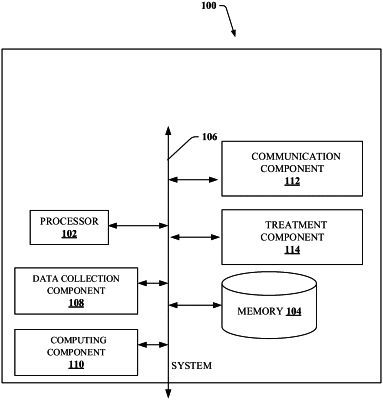| CPC G16H 50/20 (2018.01) [G16H 50/50 (2018.01)] | 20 Claims |

|
1. A system, comprising:
a memory that stores computer executable components;
a processor, operably coupled to the memory, and that executes the computer executable components stored in the memory, wherein the computer executable components comprise:
a data collection component that determines, using one or more sensors, parameter data associated with a subject over a period of time, wherein the parameter data comprises psychological data comprising at least one psychological parameter associated with the subject, physiological data comprising at least one physiological parameter associated with the subject, behavior data comprising activities performed by the subject, treatment data comprising a group of treatments applied to the subject, and timing data comprising times associated with the parameter data;
a computing component that, using a machine learning model iteratively during the period of time:
determines pain perception data representative of pain perception of the subject at the times based on the psychological data and the physiological data,
learns relationships between the psychological data, the physiological data, the behavior data, the treatment data, the pain perception data, and the timing data, and
generates, based on the learned relationships, an optimal treatment comprising one or more combinations of treatments from the group of treatments, and timings for administration of the one or more combinations of treatments to reduce the pain perception of the subject; and
a treatment component that controls a device associated with the subject to administer at least a portion of the optimal treatment to the subject.
|